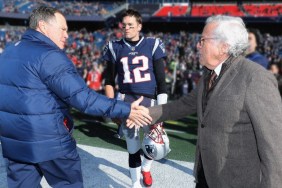Mark Zupan
Joe Soares
Keith Cavill
Chris Igoe
Summary:
The first sports documentary where you can really feel the thrill of victory and the agony of defeat.
Story:
In the sport of Quad Rugby, once referred to as “Murderball,” quadriplegic athletes in specially built wheelchairs try to score goals against the opposing team by any means necessary. Key players in this documentary include the outspoken Mark Zupan, who was paralyzed by his best friend in a drunk driving accident; Joe Soares, Team USA’s star player who is now coaching their arch-rivals Team Canada; and Keith Cavill, a recently paralyzed motocross rider trying to recover and get used to his new life.
Analysis:
It’s unlikely that you’ve ever seen a documentary quite like Murderball, but that may only because few filmmakers have found the lives of quadriplegics interesting, entertaining or commercially viable. (The recent failure of the British romantic comedy Rory O’Shea Was Here probably didn’t’ help matters.)
That said, it’s hard to resist Murderball‘s namesake game, which originated in Canada in the ’70s, before being redubbed Quad Rubgy to make it more marketable. Owing more to demolition derby then football or hockey, the game consists of teams of four quadriplegics careening across a court and crashing into each other with armored wheelchairs that look like something out of Mad Max. What’s not to love about that?
Co-directors Dana Adam Shapiro and Henry Alex Rubin found the framing story for their documentary in the conflict between the U.S. and Canadian teams, the latter now coached by former US star player, Joe Soares, who is driven by his desire to defeat his former team. Indeed, he coaches Team Canada to a victory over the undefeated US team at the 2002 World Championships in Sweden at the beginning of the film, paving the way for a possible (though unguaranteed) rematch at the 2004 Paralympics–not to be confused with “special Olympics”– in Athens. Despite this being a documentary, you expect that artistic license dictates that Team USA will go onto beat Canada for the Gold Medal, before you realize that the game and competition is just the set-up for a film meant to get into the heads of the players to find out what it’s like to spend your life in a wheelchair.
Because it’s more about the players and the personalities, the rules of the game are only touched upon before introducing the three interlocked stories that make up the crux of the film:
The doc’s most prominent face is the U.S. team’s star player, a tattooed upstart named Mark Zupan, paralyzed at the age of 18, when he fell asleep in the back of his friend’s pickup truck and was thrown out of it. Years later, the two friends haven’t resolved things or found closure, which looms over Zupan as he attends his high school reunion.
Zupan has nothing but disdain for the middle-aged Soares, who was confined to a wheelchair after being stricken with polio in his youth. At one point, another player asks Soares how he feels about betraying his country, but we never hear his answer, but his drive to defeat the team that stabbed him in the back is cut short by a debilitating heart attack that forces him to reevaluate his life and priorities.
Much of the film spends time showing Zupan and Soares at home with their families and girlfriends, mixed with kibitzing between the players while on the road, but always returning to Keith, a newly paralyzed 20-year-old who struggles to come to terms with his situation. Keith’s story isn’t nearly as interesting as the other two, but it seems important to the film in showing what many of the quadriplegic players went through before discovering rugby. Keith’s recovery process is sped up by a visit from the US Quad Rugby team to his hospital in an attempt to recruit new players. Seeing the sport through Keith’s eyes makes you realize how it’s become a way for quads who were athletic before their accidents to remain so despite what some might consider a handicap.
The filmmakers do a decent job “humanizing” these wheelchair bound athletes–that’s not to say they’re any less human than you or I– while dispelling the myths that often have people confusing quadriplegics with the far more constricted paraplegics. For the record, quads have some movement in their hands and arms, and they’re more than capable of having an active sex life. Actualy, their lives really aren’t that different or more interesting than anyone else’s, which is why the movie loses a bit the more it gets away from the game.
The game footage is really the best part of the film, shot using innovative camerawork and high-speed editing, combined with an edgy metal soundtrack, that keeps things exciting. The only time where it the ball is dropped, so to speak, is when they’re forced to shoot the US-Canada Paralympics rematch from the stands, which wouldn’t be so bad if the sounds of the game and crowd were replaced by an overused Polyphonic Spree track to make the game seem more poignant. It’s the type of emotional manipulation that you might expect from a sports drama, and it’s a bit of a letdown after the reality that precedes it.
It’s forgivable, since the candid look at the subject matter is interesting enough to make the rest of the documentary worthwhile.
The Bottom Line:
Those who might not think that a movie about quadriplegics can be entertaining will quickly be proven wrong by this documentary. Even if you’re not into the sports angle or the personal stories, there’s little question that your impressions of quadriplegics will be forever changed after seeing the movie.
Murderball opens in New York and Los Angeles on Friday and nationally on July 22.










